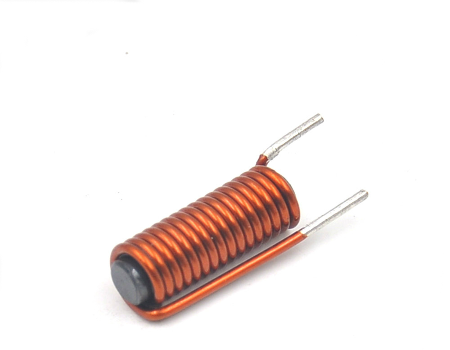
- How to make an ferrite core inductor portable#
- How to make an ferrite core inductor license#
- How to make an ferrite core inductor tv#
Some places that sell surplus radio parts are Surplus Sales of Nebraska, RF Parts, and Fair Radio Sales. And have you looked on eBay? I've seen some real bargains from time to time! I have quite a stock of them (and even rotary inductors!) that I purchased very inexpensively from hamfests.Įlectronics and radio surplus companies often have them. You just have to look elsewhere than those selling new components.

I have managed to find more than enough for my uses. You can buy those if you know where to look. Manufactured in the old "interleaved plates, air spaced" form. Variable caps are getting harder to find they're no longer What sort of range could I get with, say, a tuning slug that's iron on one end, brass on the other?
How to make an ferrite core inductor tv#
Common variable capacitors out of old radio or TV tuners run from zero to several hundred picoFarad, and a tapped coil can likewise run near zero inductance when tapped down to two or three turns. What wasn't covered in the study materials is how widely one can adjust the inductance with slugs.
How to make an ferrite core inductor license#
I recall from studying for my license exam that a ferrite or iron slug will increase inductance when inserted into a coil, while a brass (or presumably copper or aluminum - conductive but non-magnetic) slug decreases it. Now, adjustable inductors have been around for decades aligning an old superheterodyne receiver involves tweaking up to a couple dozen components, of which roughly half are slug-tuned variable inductors. It occurred to me that what's needed is to adjust the ratio of inductance to capacitance, not either one in particular if one had an inductor with stepless adjustment over a wide range of value, one might be able to use common fixed capacitors, or possibly a switch-selected gang of parallel fixed capacitors. However, variable caps are getting harder to find they're no longer manufactured in the old "interleaved plates, air spaced" form, and the tiny plastic dielectric ones that are still available can't take much voltage (and are difficult to adjust precisely). Home builders seemingly usually use a tapped coil for this, giving discrete increments of inductance and depending on a variable capacitance to finalize the match. One of the core components of any matching network - L, T, SCS, or pi - is a "variable" inductor.

How to make an ferrite core inductor portable#
Even if the SB-102 can manage without help, I'll also need to match my portable antenna to my portable QRP rigs.

Obviously, in order to manage SWR, I'll need a matching network, quite likely with a wider capability than the pi network built into my Heathkit SB-102. I will soon need an antenna impedance match (aka "antenna tuner"), because I'll initially only have a single antenna for my HF rig (needs to cover 80m, 40m, 20m, 15m, and 10m).


 0 kommentar(er)
0 kommentar(er)
